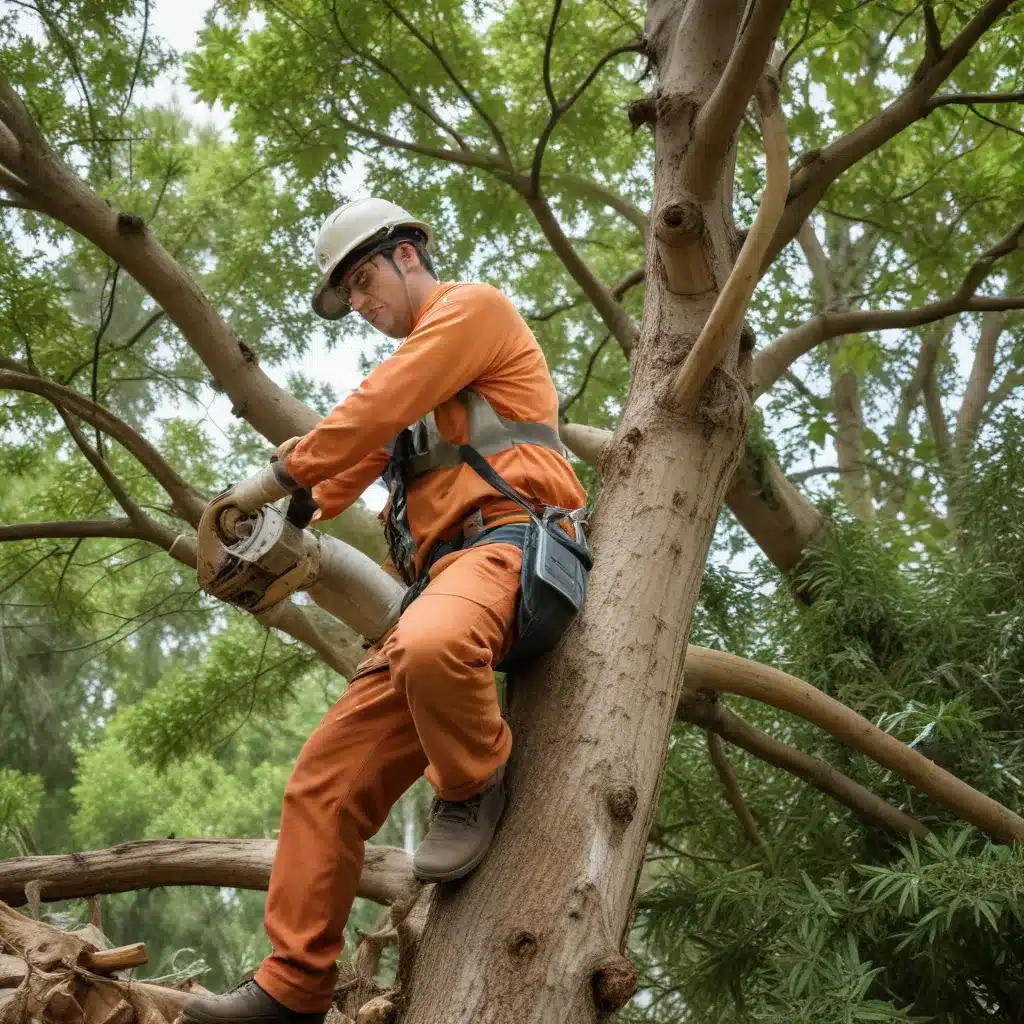
The practice of landscaping has evolved far beyond mere aesthetic appeal, now encompassing a deeper understanding of the intricate relationships between the built and natural environments. At the forefront of this paradigm shift is the holistic approach to landscape design, which prioritizes the long-term health and resilience of entire ecosystems. As a leading provider of TriCounty Tree Care, we recognize the pivotal role that thoughtful tree management plays in this holistic framework.
Environmental Considerations
Biodiversity and Habitat Preservation
Healthy, thriving landscapes are defined by their biodiversity — the rich tapestry of plant and animal species that coexist in dynamic equilibrium. When planning for tree removal, it is essential to consider the potential impact on local wildlife and the broader ecological balance. Selective thinning and strategic replanting can help maintain habitat connectivity, ensuring that vulnerable species continue to find the resources they need to survive and flourish.
Soil Health and Nutrient Cycling
The foundation of any sustainable landscape lies in the health and vitality of the soil. Tree roots play a vital role in soil structure, facilitating the nutrient cycling and water infiltration that nourish the entire ecosystem. Careful consideration must be given to the potential disruption caused by tree removal, including measures to mitigate soil compaction and preserve the delicate web of microbial life.
Water Conservation and Stormwater Management
In an era of increasing water scarcity, landscape design must prioritize water-wise strategies. Trees, with their extensive root systems and transpiration abilities, are natural allies in stormwater management, helping to reduce runoff, promote groundwater recharge, and prevent erosion. Thoughtful tree selection and placement can significantly enhance the landscape’s ability to capture, filter, and infiltrate rainwater.
Tree Removal Strategies
Evaluation of Tree Health and Structural Integrity
Before undertaking any tree removal project, a comprehensive arboricultural assessment is essential. Our experienced arborists carefully evaluate the tree’s health, structural integrity, and potential risks to the surrounding environment. This holistic evaluation ensures that tree removal decisions are based on sound scientific principles, rather than purely aesthetic or convenience-driven factors.
Selective Tree Removal for Safety and Ecosystem Balance
In some cases, the removal of certain trees may be necessary to maintain the overall health and balance of the ecosystem. This could involve the removal of invasive species, trees that pose a safety hazard, or those that are in poor health and compromising the vitality of the surrounding vegetation. By selectively thinning the canopy, we can promote the growth of more desirable species and enhance the landscape’s resilience.
Replanting and Reforestation Efforts
Responsible tree removal should always be accompanied by a commitment to replanting and reforestation. By carefully selecting appropriate native or adapted species, we can ensure that the landscape’s ecological functions are restored and enhanced over time. This cyclical approach to tree management is a cornerstone of sustainable landscaping, fostering long-term ecosystem health and biodiversity.
Holistic Approach to Tree Management
Integrated Pest and Disease Management
Maintaining the health and vigor of the landscape’s trees requires a proactive approach to pest and disease management. Our team of experts utilizes a range of organic and biological control methods, prioritizing early identification and intervention to prevent the spread of harmful organisms. This holistic approach minimizes the use of synthetic pesticides, safeguarding the overall environmental well-being of the site.
Community Engagement and Education
Sustainable landscaping is a collaborative effort, involving the active engagement of local stakeholders, including residents, community organizations, and municipal authorities. By fostering open dialogues and providing educational resources, we empower individuals to become active stewards of their local landscapes. This shared commitment to ecological preservation is a cornerstone of our holistic approach to tree management.
Landscape Design Principles
Site Analysis and Planning
Effective sustainable landscaping begins with a comprehensive site analysis, evaluating the unique characteristics of the location, including soil conditions, microclimate, and existing vegetation. This informed planning process allows us to tailor our design strategies to the specific needs of the site, ensuring long-term resilience and ecosystem harmony.
Aesthetic and Functional Considerations
While prioritizing ecological integrity, sustainable landscaping also recognizes the importance of aesthetic appeal. By incorporating native plant species and strategically positioning trees, we create visually stunning outdoor spaces that seamlessly integrate with the surrounding environment. This holistic approach balances the functional and aesthetic aspects of the landscape, providing tangible benefits to both the ecosystem and the human users.
Ecosystem Services and Benefits
Carbon Sequestration and Climate Resilience
Trees are remarkable carbon sinks, actively removing atmospheric carbon dioxide and storing it in their biomass. By strategically incorporating trees into the landscape design, we can enhance the site’s ability to mitigate climate change through carbon sequestration. Additionally, the cooling effects of tree canopies can help combat the urban heat island effect, improving overall climate resilience.
Stormwater Management and Flood Control
The deep, extensive root systems of trees play a crucial role in stormwater management, helping to reduce runoff, promote groundwater recharge, and prevent soil erosion. By leveraging the natural hydrological functions of trees, sustainable landscaping designs can effectively manage excess stormwater, reducing the risk of flooding and alleviating the burden on municipal infrastructure.
At TriCounty Tree Care, we are committed to integrating tree removal and management into a holistic, sustainable landscaping approach. By prioritizing ecological integrity, community engagement, and the long-term resilience of the entire ecosystem, we strive to create outdoor spaces that thrive in harmony with the natural world. Contact us today to learn more about our innovative solutions for your sustainable landscaping needs.


